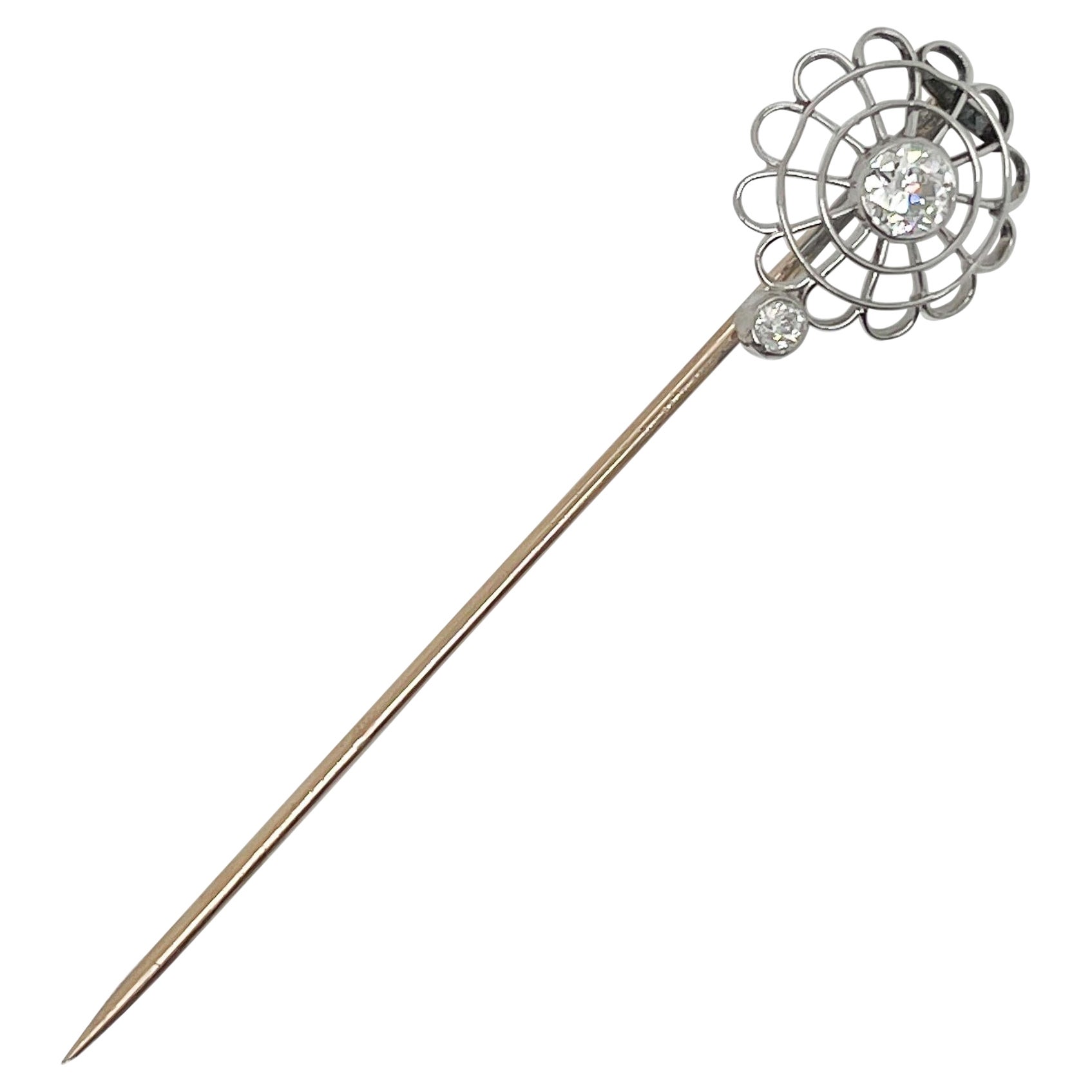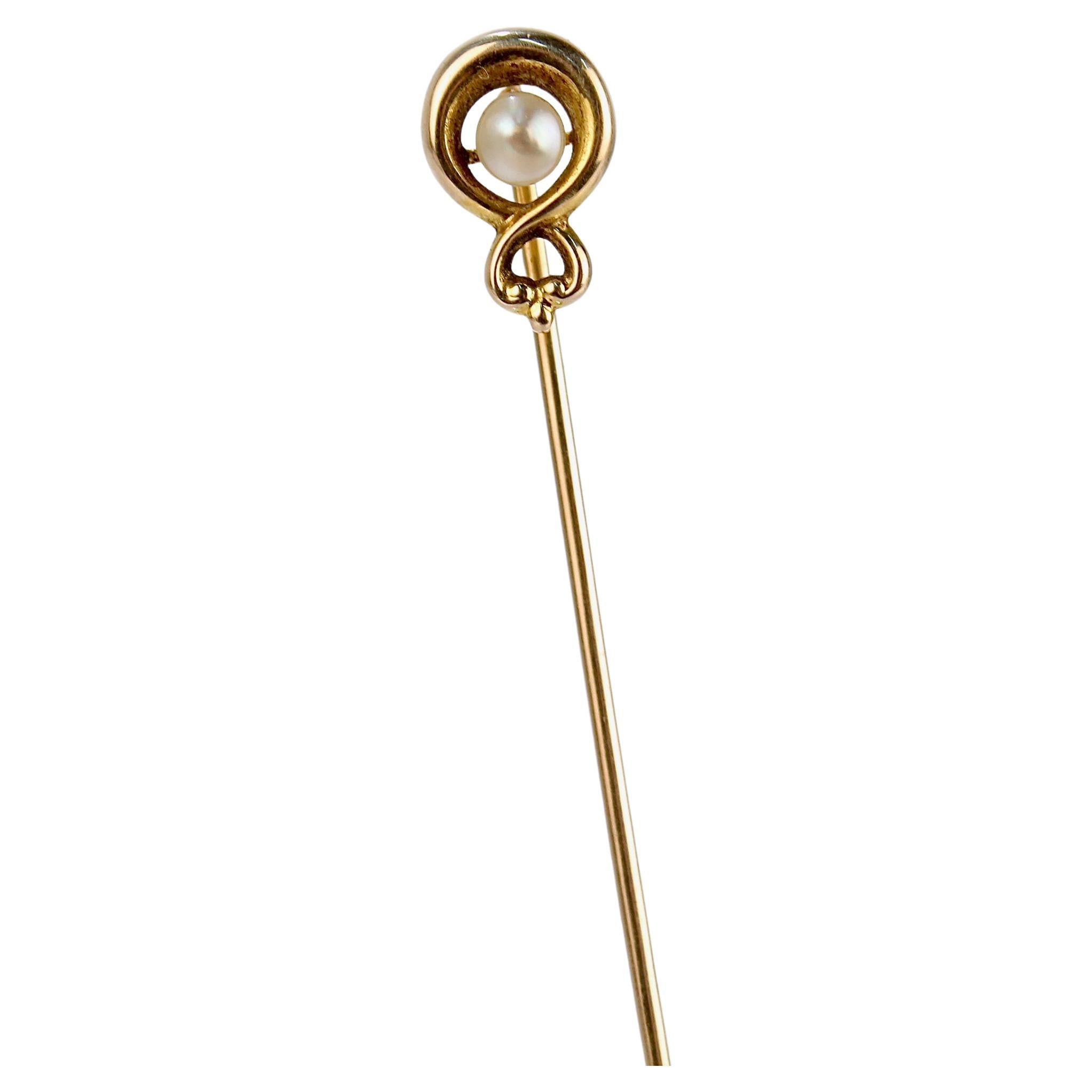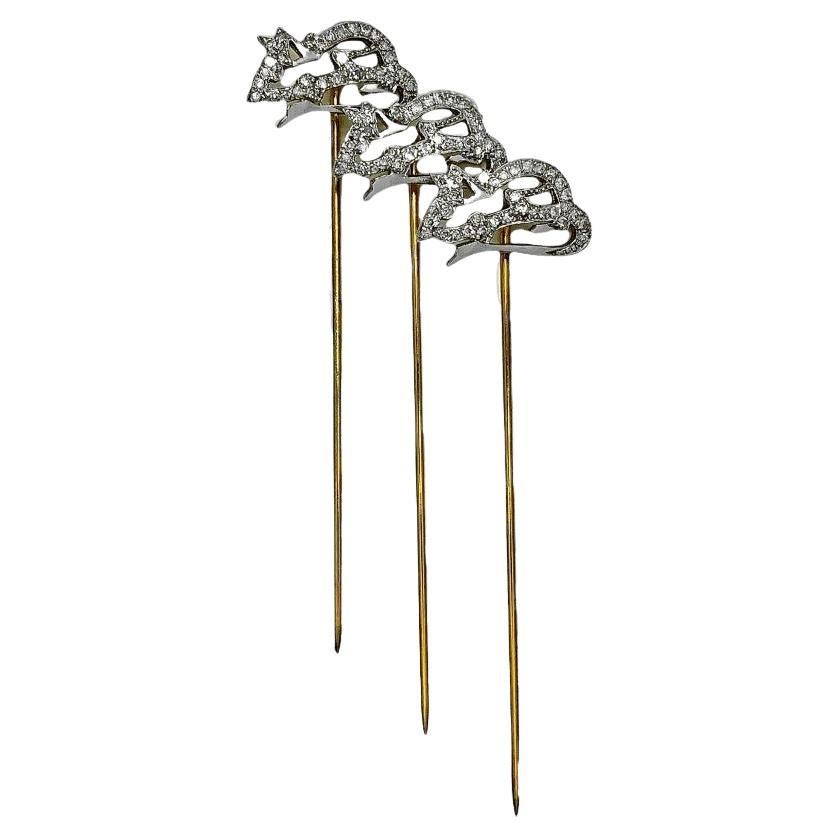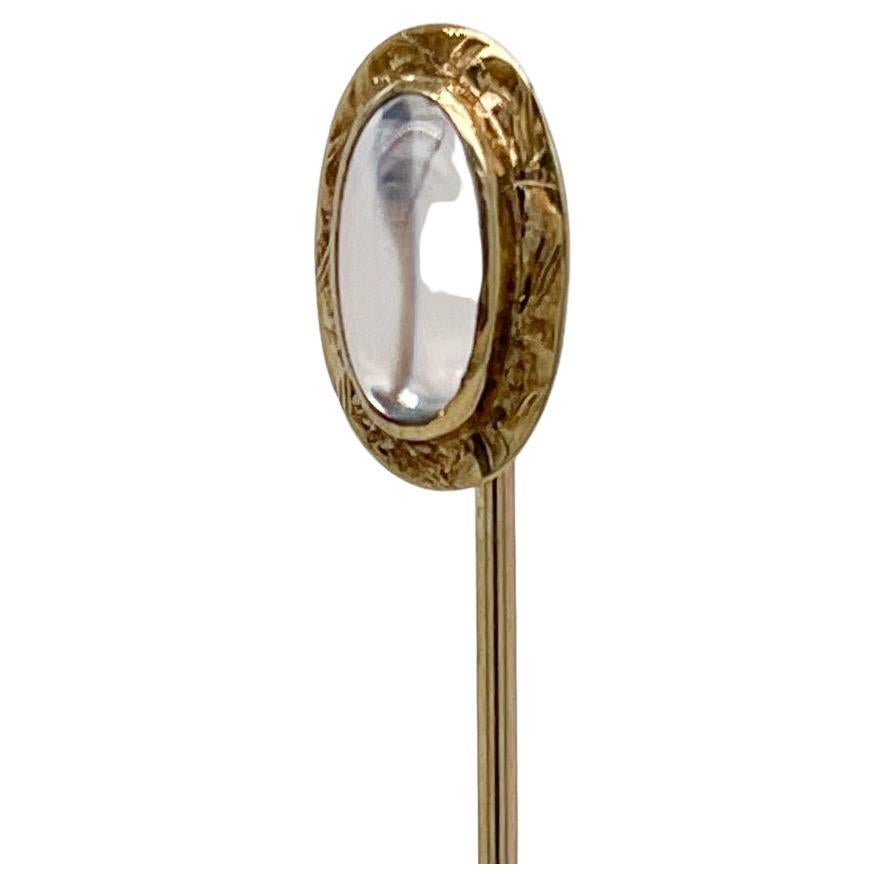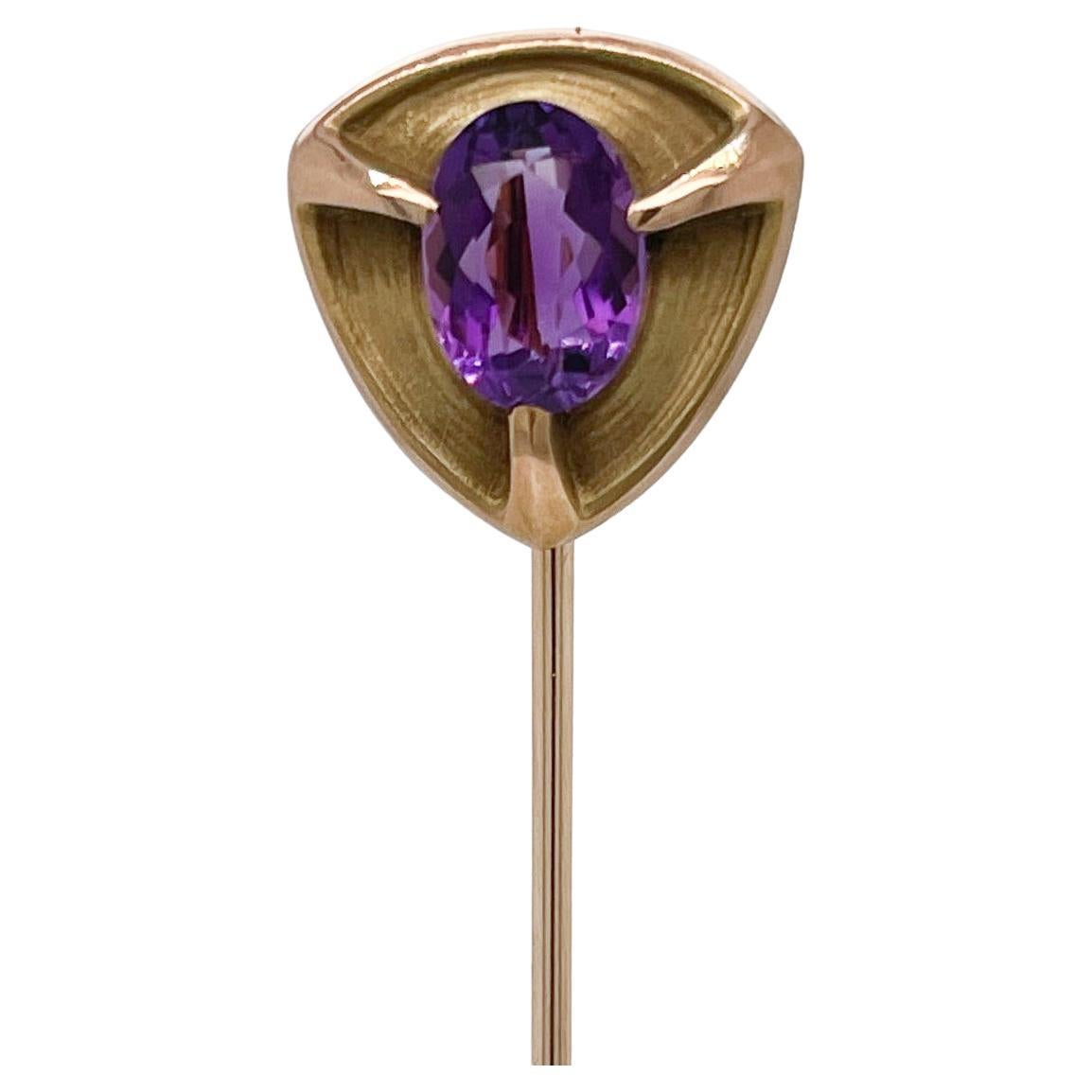Items Similar to ArtDeco Coro 1919 "PatPend" LadyBug Enamel FauxGem Vermeil Brooch
Want more images or videos?
Request additional images or videos from the seller
1 of 6
ArtDeco Coro 1919 "PatPend" LadyBug Enamel FauxGem Vermeil Brooch
About the Item
With the Coro signature "script-no-angle" since 1919 and "PAT.PEND.", this early Art Deco vermeil lady-bug beetle brooch features a red enameled face and mixed-cut bezel-set red and blue crystals with clear crystal pave back. The gap between the convex wings and five holes on the base enable maximum light for a surprising degree of sparkle from a small brooch.
This is not the later patented version of the design that included a piece of felt for the purpose of applying perfume to diffuse more slowly, which has a different Coro signature "angled script" and shortened "PAT." This is the earliest lady-bug version, which any Coro or bug-brooch collector should have.
- Creator:
- Metal:Vermeil,Gilt Metal,Enamel,Gold
- Stone:Blue Sapphire,Ruby,Crystal
- Stone Cut:Mixed Cut
- Dimensions:Width: 0.79 in (20 mm)Depth: 0.6 in (15 mm)Length: 0.79 in (20 mm)
- Style:Art Deco
- Place of Origin:United States
- Period:Early 20th Century
- Date of Manufacture:1919-1939
- Condition:Wear consistent with age and use. Minor losses.
- Seller Location:Chicago, IL
- Reference Number:1stDibs: LU3244218584132
About the Seller
5.0
Vetted Seller
These experienced sellers undergo a comprehensive evaluation by our team of in-house experts.
Established in 2012
1stDibs seller since 2022
9 sales on 1stDibs
Typical response time: 1 hour
- ShippingRetrieving quote...Ships From: North Adams, MA
- Return PolicyA return for this item may be initiated within 1 day of delivery.
More From This SellerView All
- Swedish 1962 Tennesmed SterlingSilver RedPouredGlass Geometric Stigbert BroochBy Rune TennesmedLocated in Chicago, ILMade in 1962 by Swedish Rune Tennesmed, this modern minimal sterling silver geometric brooch features a faux ruby poured-glass red cabochon, concave sheet metal, and openwork that forms two corners of the two-tier triangular brooch. This simple abstract design is characteristic of the rounded geometric shapes that framed his silvery pieces, while his early work sometimes included a pop of brightly colored glass. Tennesmed (1929-2011) was a 20th-century studio metalsmith, who changed his given name Carlsson to reflect his craft and his business name, which means "pewtersmith" in Swedish. This unusually elegant and sleek piece was made for Scandinavian Atelie Stigbert, which was recognized for producing modern jewelry designs in sterling silver and gold. The brooch was likely commissioned by the Stigbert workshop founder Stig Engelbert who died in 1962, before his artisan sons evolved the family business to be known as Engelbert. Recognized as one of the most significant and popular Scandinavian artists of the mid-20th century, Tennesmed revived ancient Viking...Category
Vintage 1960s Swedish Modernist Brooches
MaterialsRuby, Sterling Silver
- Dolce&Gabbana 2000 Runway Silk Rosette Flower Cufflink Or BoutonniereBy Dolce & GabbanaLocated in Chicago, ILDolce & Gabbana featured silk-rose jewelry like this versatile pale-peach seven-inch-diameter accessory on many of the runway looks from the design-duo's Spring/Summer 2000 collection (see photo). The rose is a signature motif of this pair of Italian designers, while the Dolce & Gabbana brand tag is sewn to the back of this piece that was "Made in Italy" in 1999. The unusual "cufflink" hardware on the back of the faux rose enables it to be secured through a buttonhole or as a pendant for a necklace, neckerchief, or narrow belt...Category
1990s Italian Romantic Pendant Necklaces
MaterialsBase Metal
- MiriamHaskell c1929 FrankHess Rare FurClips GoldGiltBrass 3ChainFloraBow LariatBy Frank Hess for Miriam HaskellLocated in Chicago, ILAs one of Miriam Haskell's earliest fur clips from the late 1920s, these two Russian-gold gilt mostly brass brooches by her first designer Frank Hess are tethered as a lariat by thre...Category
Vintage 1930s American Baroque Revival Brooches
MaterialsYellow Gold, Brass, Gilt Metal
- MiriamHaskell WWII FrankHess PurpleGlassFlowersGoldLeaves WiredPlasticBackBroochBy Frank Hess for Miriam HaskellLocated in Chicago, ILBeginning in 1939, Miriam Haskell asked her first designer Frank Hess to sparingly use metal in the costume-jewelry collections during WWII while war materials were needed. So their ...Category
Vintage 1940s American Baroque Revival Brooches
MaterialsMixed Metal
- Cruciform NielloInlay FleurDeLys GiltEngravedCopperAlloy Heraldry Brooch PendantLocated in Chicago, ILThis 15th-Century period or older gilt copper and silver alloy amulet with niello inlay is an elaborately engraved three-dimensional brooch and pendant, which demonstrates the epitome of miniature decorative nielli in the early Renaissance by European goldsmiths of small cruciform or quatrefoil objects with heraldry symbols. Beyond a dense array of engraved radiant-light, cloud and star motifs with punchwork, it features a 10mm fine black crested staff that is the Christian symbol for the Holy Trinity. This intricate engraving with niello has fleur-de-lys elements, like a French or Florentine coat-of-arms or monogram used to identify noble families or a significant person like a king. It tops a 5mm bar, which is bracketed by 10mm peaked bars that form a cross. When worn, it is positioned horizontally like an elongated barbed quatrefoil. The bars may be concealing a relic such as wood, while it is not clear how these pieces are attached to the front. As a symbol of French conversion to Christianity, the French King Louis in the 12th Century made a fleur-de-lys element of the Holy Trinity vector the official emblem of his royal authority on shields. Later, English kings adopted it when claiming the French throne. By the 14th Century, the fleur-de-lys was used in family insignia that was sewn onto a knight's coat-of-mail surcoat. This coat-of-arms insignia could identify them if found on a battlefield. The Met Cloisters museum collection includes a similarly sized mid-15th Century French gold brooch...Category
Antique 15th Century and Earlier European Renaissance Brooches
MaterialsGilt Metal, Mixed Metal, Niello, Silver, Copper
- Couture CocoChanel Byzantine ThePurpleHeart PearlAmethystQuartz GoldMedallionBy ChanelLocated in Chicago, ILDuring the ArtDeco period when Gabriel "Coco" Chanel was at her peak as a Parisian couture fashion-designer in the early 1930s, this antique one-of-a-kind handcrafted gem-fringed and gilt-chain medallion brooch with trombone clasp was commissioned to accessorize one of her clothing designs. Marked only "FRANCE" like some early 1930s Chanel couture jewelry (without a brand stamp until the 1950s), its artistic origin is most likely from ornate organic-form sketches by her favorite parurer Fulco di Verdura. The Sicilian duke began creating fabric patterns for Chanel in 1927, which shortly expanded to fine jewelry beginning with custom pieces for herself. These include the iconic Byzantine-influenced gem-adorned cuffs referencing the Maltese military-cross, which the French designer can often be seen wearing in circa-1930s photos. This bright yellow-gold brooch suits goldsmith Verdura's early anti-Art-Deco aesthetic that was considered a radical departure from 1920s silver-tone jewelry, which otherwise featured linear geometric designs or figurative representation. The softly-shaped deconstructed gem-bouquet mixes amethyst and rose-quartz beads with natural Keshi pearls and intricate tiny gilt leaves, which are wired to a Baroque-motif open-work frame that dangles another gem surrounded by a thick gilt-rope halo. Notably, Verdura is credited with re-introducing since Victorian times the rope motif to jewelry. Since 1930, Verdura's unique style was influenced by travels with Chanel to explore Byzantine art, Baroque architecture, and exotic flora-and-fauna among his native Italian aristocratic estate. The legendary fashion-editor Diane Vreeland and American entertainment-stars were among the first Chanel clients to acquire couture real-gem-adorned jewelry made by Verdura, while one of the two brooches treasured by Vreeland was titled "Theodora". See our photo of the Byzantine mosaic of Empress Theodora, whose image wearing many teardrop pearls above her chest and surrounded by a golden halo seems to be the inspiration for this brooch. As one of the most important modern-design collaborations, Chanel's close relationship with Verdura lasted largely-undocumented years in Paris, until he launched his first outside jewelry venture with a Hollywood designer-boutique after emigrating to the United States in 1934. By 1939 as a financially-backed in-demand goldsmith, he founded the namesake jewelry-company Verdura in NYC. After he retired in 1973, the brand continued to operate without him with different owners. Given the duo's designs that played with historic and military references, Chanel's couture commission for this purple medallion may have been sparked in the early 1930s when the internationally-new...Category
Vintage 1930s French Brooches
MaterialsAmethyst, Pearl, Quartz, Gold, Gilt Metal, Yellow Gold
You May Also Like
- Antique Edwardian Platinum, Gold & Diamond Flower or Web Stick PinLocated in Philadelphia, PAA very fine Edwardian stick pin. In a platinum spider web (or stylized flower) pattern. With a bezel set diamond in center and bottom of wire fra...Category
Early 20th Century Edwardian Brooches
MaterialsDiamond, Gold, 10k Gold, Platinum
- Antique Art Nouveau 10 Karat Gold & Seed Pearl Stick PinLocated in Philadelphia, PAA very fine 10k gold and seed pearl stickpin. With a round white pearl set in center of a 10k gold infinity loop. Simply a great stickpin! Date: Early 20th Century Overall Condi...Category
Early 20th Century Unknown Art Nouveau Brooches
MaterialsPearl, Gold, 10k Gold
- Set of 3 Diamond Encrusted Mice Stickpins in 18K White Gold with 14K Yellow PinsLocated in Palm Beach, FLThis whimsical set of three mice can be worn separately or together, evoking the much loved children's nursery rhyme. Each 18K white gold mouse is encrusted with brilliant cut diamon...Category
Late 20th Century Unknown Brooches
MaterialsDiamond, 18k Gold, Yellow Gold, 14k Gold, White Gold
- Antique Edwardian Moonstone Cabochon & Gold Stick PinLocated in Philadelphia, PAA very fine antique Edwardian gold and moonstone stickpin. With a smooth, oval moonstone cabochon bezel set in 10k gold with decorative oval frame....Category
Early 20th Century Unknown Edwardian Brooches
MaterialsMoonstone, Gold
- Antique Signed Art Nouveau Amethyst & 14k Gold Stick Pin by Brassler Co.Located in Philadelphia, PAA very fine antique Art Nouveau amethyst and 14k gold stickpin. By Brassler Co. With a faceted oval prong set amethyst centered of 14k gold shield shaped frame. Simply a great st...Category
Early 20th Century American Art Nouveau Brooches
MaterialsAmethyst, 14k Gold
- Antique Edwardian 10 Karat Gold & Diamond Love Knot Stick PinLocated in Philadelphia, PAA very fine Edwardian gold and diamond love knot stick pin. Set with a round brilliant diamond to the center of 10k gold lover's knot. Simply a great stickpin! Date: Early 20th ...Category
Early 20th Century Unknown Edwardian Brooches
MaterialsDiamond, Gold, 10k Gold
Recently Viewed
View AllMore Ways To Browse
1939 Jewelry
Beetle Jewelry
Pat Jewellery
Light Blue Brooches
Convex Blue
Enamel Perfume
Antique Perfume Set
Enamel And Sapphire Brooch
Antique Crystal Brooch
Antique Crystal Brooches
Red Art Deco Brooches
Antique Crystal Perfume
Antique Brooch Lady
Bug Jewellery
Ladybug Jewellery
Ladybug Jewelry
Bug Jewelry
Bugs Jewellery
